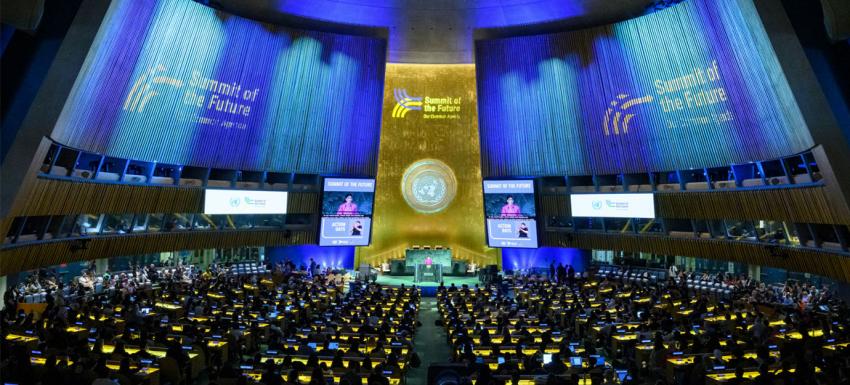
By Baboloki Semele: In a historic move, world leaders have unanimously adopted the Pact for the Future, an international agreement that addresses pressing global challenges while looking ahead to secure a more just and sustainable world. The Pact includes the Global Digital Compact and the Declaration on Future Generations, making it one of the most wide-ranging international agreements in recent memory.
This initiative is the result of a years-long, inclusive process aimed at adapting international cooperation to today’s realities. As United Nations Secretary-General António Guterres remarked, “we cannot create a future fit for our grandchildren with a system built by our grandparents.”
The Pact outlines a comprehensive vision for a more representative and effective international system. Leaders emphasized the importance of drawing on the expertise of governments, civil society, and other partners to meet evolving global challenges. The President of the General Assembly hailed the agreement as a foundation for a “sustainable, just, and peaceful global order – for all peoples and nations.”
Key Commitments in the Pact
The Pact for the Future covers a broad spectrum of issues, from peace and security to digital governance and climate change. Major highlights include:
Peace and Security
- A commitment to reform the UN Security Council for the first time since the 1960s, prioritizing greater representation of Africa.
- A renewed push for nuclear disarmament, with the goal of completely eliminating nuclear weapons.
- Strengthening international frameworks for the peaceful exploration of outer space and preventing its weaponization.
- Affirmation that new technologies, such as autonomous weapons, must be governed by international law.
Sustainable Development and Climate Action
- A pledge to accelerate the implementation of the Sustainable Development Goals (SDGs).
- Reforms to the international financial architecture to better serve developing countries, including more representation in decision-making at financial institutions and increasing development finance.
- Concrete actions to address sovereign debt, climate change, and the transition to renewable energy, with a commitment to keep global temperature rise to 1.5°C.
Digital Cooperation
- The Global Digital Compact marks the first comprehensive framework for digital and AI governance. It includes commitments to:
- Connect all people and institutions to the internet.
- Ensure digital cooperation is grounded in human rights and international law.
- Govern AI responsibly, with a roadmap for international collaboration.
- Safeguard the online space, particularly for children.
Youth and Future Generations
- The first Declaration on Future Generations, outlining concrete steps to integrate future generations into current decision-making processes.
- More opportunities for youth to participate in global governance.
Human Rights and Gender Equality
- Stronger commitments to human rights and the empowerment of women, along with calls to protect human rights defenders.
- Increased engagement of diverse stakeholders, including local governments, civil society, and the private sector.
Global Participation and Follow-Up
The Pact for the Future has been shaped by contributions from millions of voices across the globe. The Summit of the Future, which gathered over 4,000 representatives from Heads of State, governments, and civil society, was preceded by two Action Days, attracting more than 7,000 participants and securing USD 1.05 billion for advancing digital inclusion.
With comprehensive follow-up mechanisms in place, the Pact sets the stage for continued global cooperation to ensure that commitments lead to tangible actions in the years to come.